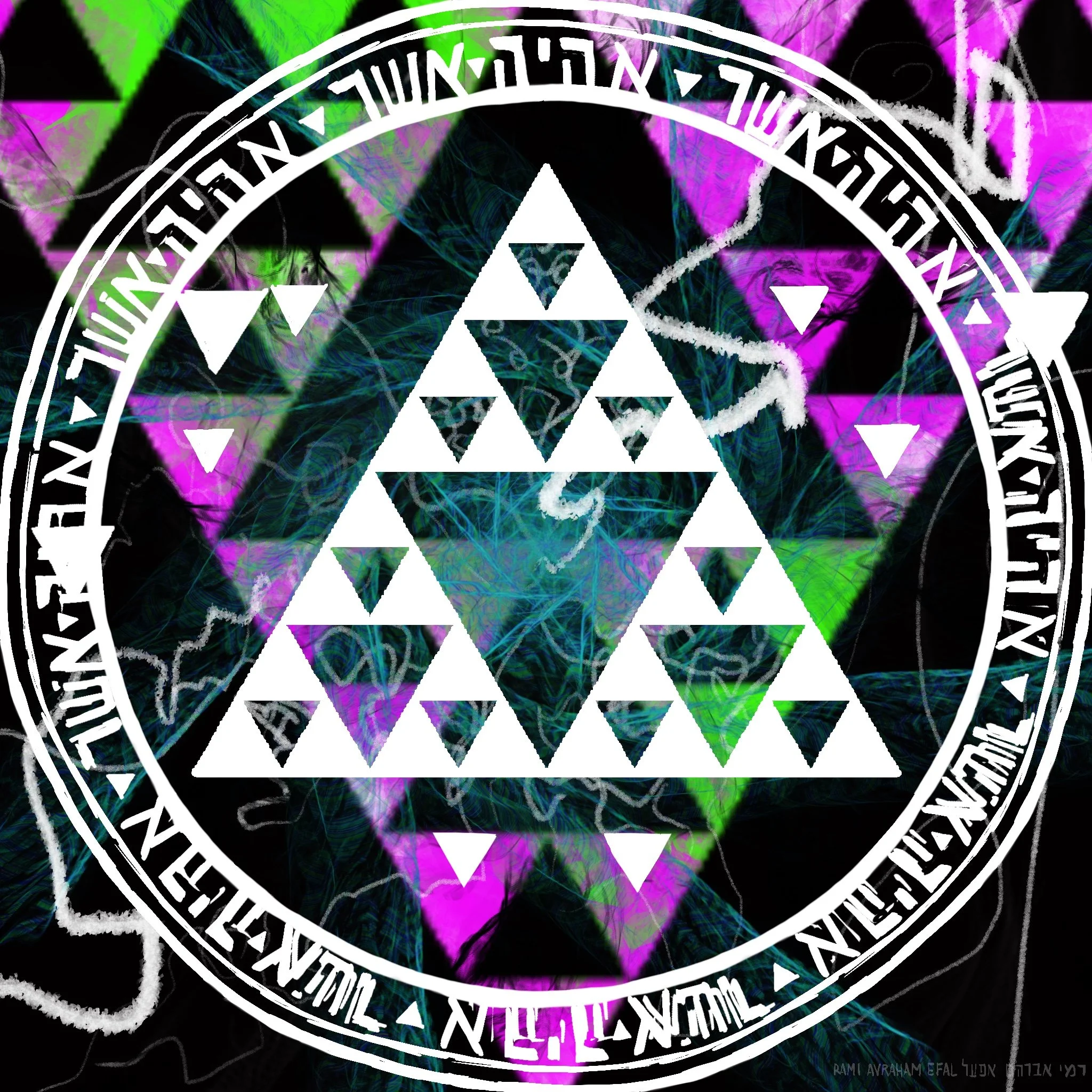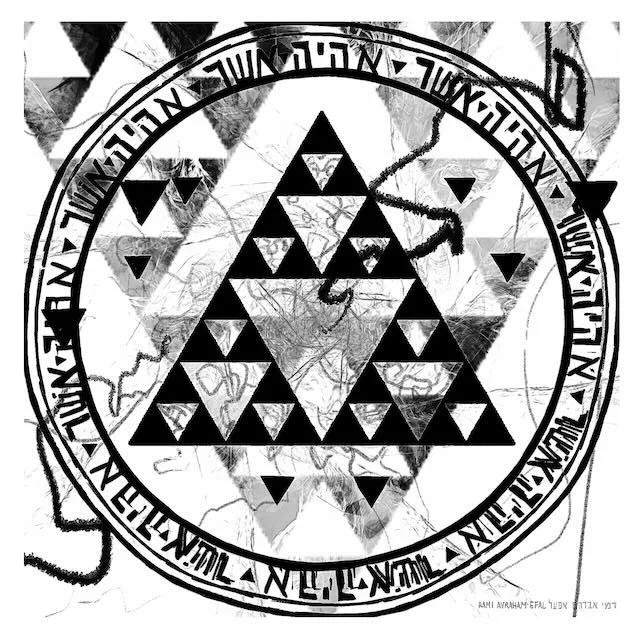Shiviti: Eheye Asher Eheye
Jewish meditation aid sourced in a mathematic fractal, plant medicine meditation, and the Torah.
A shiviti (Hebrew: שויתי) is a Jewish meditative aid. The word shiviti comes from the verse שִׁוִּ֬יתִי יְהֹוָ֣ה לְנֶגְדִּ֣י תָמִ֑יד / “I will place/equate YHWH before me always,” found in Tehilim / Psalms 16:8
A shiviti often features one name of God, a passage from Psalms, and very often uses the form of a menorah (candelabra) as a geometric layout. I took liberties. The artform originated from the extremely controversial Sabbatean sect in the 17th century.
In the book of Shmot / Exodus 3:14 Moshe asked the burning bush “What is your name?” and God’s answer was Eheye Asher Eheye, “I will be what I will be.” That is the name of the Nondual I used in the round element.
This shiviti includes the triangular element called the Sierpinski Fractal, a geometrical formula that is both infinitely scaleable and reducible, while revealing the exact geometrical expression throughout. This visual object appeared to me while meditating with the support of a plant medicine, and upon research I found it was articulated in 1915 by Wacław Franciszek Sierpiński, a Polish mathematician.
One may practice with a shiviti by meditating before it, eyes open with soft defused gaze, continuously bringing back the attention to the image. If/once the pattern is imprinted in one’s memory, the practitioner can behold the design, its details and topography in their awareness, within. Once imprinted, it is available to be called upon anywhere, anytime, like a prayer, a lullaby, an embrace.
The term Shiviti was used by holocaust survivor author Yehiel De-Nur aka Ka-tzetnik 135633 (the number he was aissgned in Auschwitz) in his book titled Shivitti: A Vision from Gateways Books, an autobiographical account of his revisiting and recovery from the trauma left from his life and witnessing in the deathcamp, through the use of psychedelic therapy. My late Zen Buddhist Teacher Roshi Bernie (Tetsugen) Glassman z”l referred to this book as one of the inspirations to the creation of the Bearing Witness retreat in Auschwitz, and assigned it as the only recommended book to read in preparation to visiting the camp.


